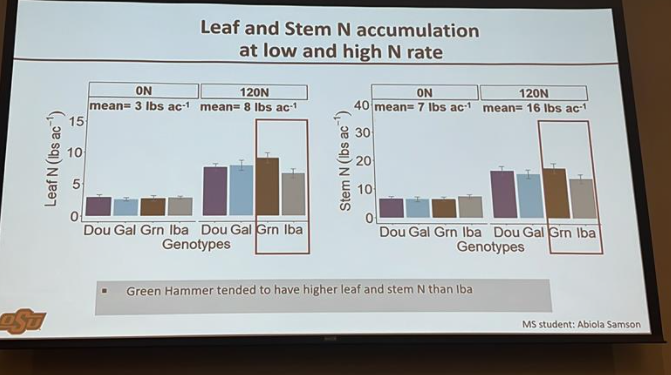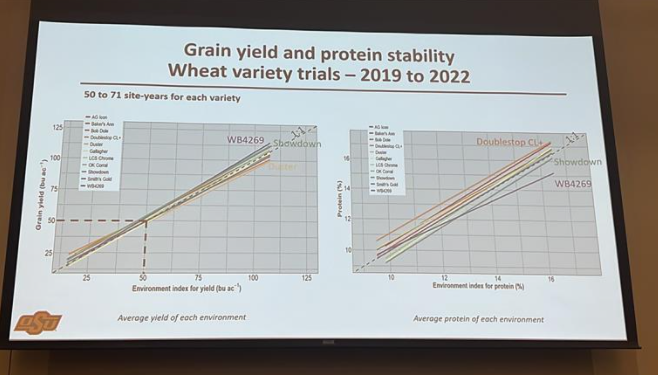
At the OGI Wheat Meeting, Farm Director, KC Sheperd, caught up with small grains extension specialist at Oklahoma State University, Dr. Amanda Silva, talking about wheat research at the university and Oklahoma’s wheat crop.
“The situation is a little bit rough in some areas of the state,” Silva said. “We are still under drought, especially western area- panhandle hasn’t really seen the rain that we have in other parts of the state, so wheat is small.”
A lot of wheat went in very late in the panhandle, Silva said, and the cold front that came in January and February has not been great for the crop.
“We are also seeing some moisture, so that makes me hopeful,” Silva said. “We need to see what this weather does, and are hoping this rain that we received in some parts of the state is going to help our crop.”
Genetic diversity has been a big part of OSU’s research in 2022, Silva said, as much was learned from the different varieties with the drought impacts at play. In a study being compiled by one of Silva’s master’s degree students, Silva said, they are researching how higher protein accumulates more nitrogen in the stem, causing the plant to leaf later in the season.

“In this study, we are comparing the Double Stop, Green Hammer, Gallagher and Iba, and the most visible difference that we found was with Green Hammer and Iba,” Silva said.
Green Hammer that has a larger protein and yield than Iba, showed that it has a higher accumulation of nitrogen in the stem and leaf, especially later in the growing season.
“That is very likely due to it’s ability to stay photosynthetically active later in the growing season, which it also shows by its greater accumulation of nitrogen after flowering,” Silva said.
Lower protein of Iba also reflects its greater nitrogen utilization efficiency, Silva said, so it has the ability to produce a greater yield with less nitrogen.
“That high nitrogen utilization efficiency causes protein dilution in the grain, resulting in that lower protein,” Silva said. “Those are the preliminary results we have so far, but we are going to continue developing that study and continue working on that.”

Silva also talked about last year’s variety trials. The information researched, Silva said, will be available to producers soon.
“Some of the information that we gathered last year is already posted on our website,” Silva said.















